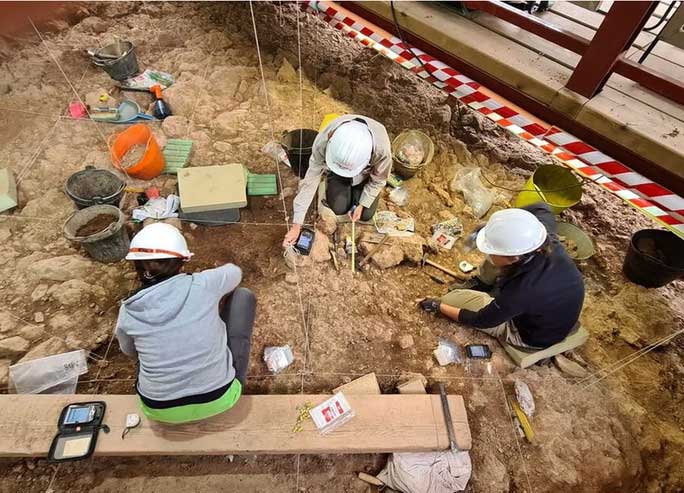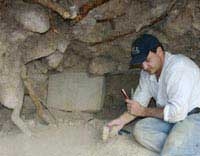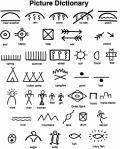An ancient human species coexisted peacefully with our Homo sapiens ancestors, even interbreeding and developing various techniques together, yet they had some very chilling customs.
The unsettling discovery comes from the Cuevas del Toll de Moià, a cave system located between the municipalities of Moià and Tona in the province of Barcelona, Spain. This cave system stretches up to 2 km and shows signs of human habitation.

Excavation at Cuevas del Toll de Moià – (Photo: IPHES).
According to Heritage Daily, previous studies have found several animal remains that were butchered from the mid to late Holocene (Pleistocene epoch), a geological period that ended more than 11,500 years ago. These remains include the bones of bears, red deer, and an ancient species of wild cattle.
Additionally, traces and tools indicate that the cave’s inhabitants were not Homo sapiens (modern humans) but rather a species that has since gone extinct, also belonging to the genus Homo: the Neanderthals.
A research team from the Catalan Institute of Palaeoanthropology and Social Evolution (IPHES) and the CERCA Institute of Spain has recently discovered the skull and clavicle of an individual from this species, with cut marks indicating that this person was butchered rather than having lived in the cave.
This is not the first recorded case of cannibalism among this ancient human species. However, previous findings were quite limited, suggesting that such practices were not widespread.
Radiocarbon dating based on sediment indicates that this gruesome practice occurred around 52,000 years ago, a period when Neanderthal and Homo sapiens communities encountered each other in various parts of the world.
This further suggests that Neanderthals were indeed more complex than we previously thought, although it remains unclear whether this was a ritual or something else entirely.
Previously, some excavations indicated that this ancient human species was not a primitive form of hominid but rather fully evolved humans with larger brains than ours, even if their cognitive abilities might have been slightly less efficient.
They also possessed various techniques such as fiber weaving, net making, and crafting beautiful jewelry similar to modern humans before they went extinct around 30,000 years ago.
Thanks to interbreeding, Neanderthal DNA still exists in small percentages in many modern humans, most commonly found in Northern Europe.





















































